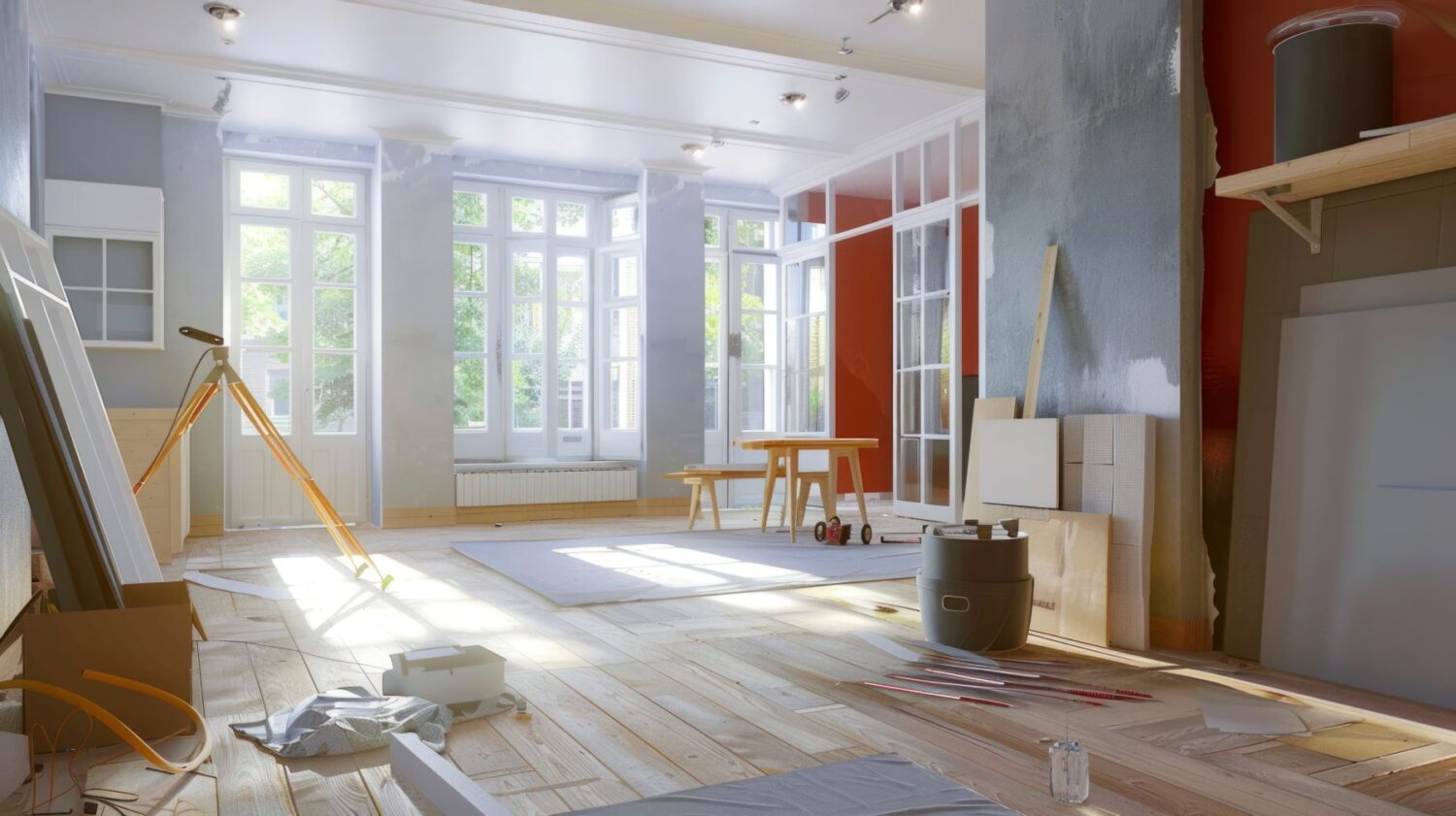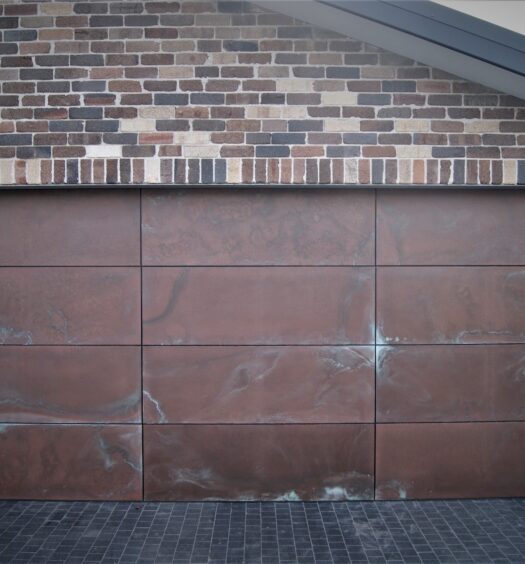Renovating a home can be an exciting journey. But when that home contains asbestos, safety becomes a top priority.
Asbestos, a naturally occurring mineral once used extensively in construction, can pose serious health risks when disturbed. Awareness of safe renovation practices in homes with asbestos is crucial to ensure both quality renovation and the safety of everyone involved.
Not only is it essential to understand the types of asbestos, but knowing how to handle renovation safely and in a compliant manner can make a world of difference.
Understanding Asbestos and Its Risks
Asbestos is primarily found in older homes. It was built before the late 1970s. It was used as
- insulation
- roofing
- flooring material
The primary risk associated with asbestos is that when it’s disturbed or damaged, tiny fibers become airborne and can be inhaled. Inhaling these fibers can lead to
- serious respiratory illnesses
- asbestosis
- lung cancer
- and mesothelioma
Therefore, understanding how to identify and manage asbestos in homes is fundamental for anyone planning renovations.
Identifying Asbestos in Your Home
Before you start fixing or changing things in your house, it’s very important to check for something called asbestos. Asbestos is a harmful material that was used in some older homes.
You might find it in
- insulation around pipes and heaters
- paints or wall coverings
- underfloor tiles
- roof shingles
- decorative wall designs
If you think any of these things might have asbestos, you should ask a professional to check before doing any work. This helps keep everyone safe.
If your home was built before 1980, consider hiring a professional to conduct an asbestos inspection. They will take samples for laboratory analysis, ensuring accurate identification. Always keep in mind that disturbing materials containing asbestos can lead to serious health risks.
Safe Renovation Practices
Once you’ve identified potential asbestos-containing materials (ACMs), take the following steps to ensure safe renovations:
1. Don’t Rush; Plan Thoroughly
Take your time and make a clear plan before doing anything. Learn which parts of your house might have asbestos and how to work around them safely. Planning ahead helps you avoid mistakes and keeps everyone safe.
2. Use Protective Gear
Always wear the right safety gear if you’re near asbestos. This means using a mask (called a respirator), gloves, and special clothes that you can throw away afterward. Wearing this gear helps stop tiny asbestos pieces from getting into your lungs or on your skin.
3. Seal Off Work Areas
Keep the work area separate from the rest of your home. Use plastic sheets to cover doors and vents so that asbestos dust doesn’t spread. This helps protect your family and pets from breathing in anything harmful.
4. Employ Proper Removal Techniques
If you find that you must remove ACMs, following specific methods for safe asbestos removal is essential. Wetting materials can help to keep fibers from becoming airborne. While carefully removing them in larger sections can minimize damage.
5. Dispose of Asbestos Properly
Local regulations for asbestos disposal vary. It’s crucial to bag asbestos waste in sealed, sturdy containers with clear labeling. Contact your local waste management facility to learn about safe disposal practices.
Regulations Governing Asbestos Renovation
Renovating homes with asbestos is subject to stringent federal, state, and local regulations. For example, the EPA oversees regulations for handling asbestos in construction and renovation projects. Familiarizing yourself with these regulations can prepare you to comply with the law and ensure the safety of your renovation.
Local authorities often have unique regulations regarding notifications for asbestos disturbance. This can be particularly important during renovations in residential areas.
Hiring Professionals for Asbestos Removal
In many cases, especially for extensive renovation projects, hiring professionals for asbestos removal is the safest choice. Certified asbestos abatement contractors are trained to manage asbestos safely and reduce risks significantly. When searching for a qualified contractor, consider their certifications and experience, as well as requesting references.
Ensure they follow local regulations and guidelines for asbestos removal in Sutherland Shire to guarantee compliance and safety.
What to Expect During the Asbestos Removal Process
If you decide to hire professionals, understanding the asbestos removal process can ease your mind. Professionals will conduct a thorough inspection, create a detailed plan, and execute the removal following safety protocols. Here’s an overview of what you can expect:
1. Comprehensive Assessment
The contractor will assess the site, identifying areas needing remediation. They will take samples and analyze them for asbestos presence. This creates a detailed risk assessment.
2. Development of a Removal Plan
Next, the contractor will make a special plan just for your home. The plan will explain how they will block off the dangerous areas and what tools they’ll use. It will also include how long the job will take and how to keep everyone safe.
3. Removal Process
When it’s time to remove the asbestos, workers will wear safety gear like masks, gloves, and suits. They will use special ways to stop the harmful dust from spreading, like spraying water and using strong vacuums with filters. These steps help keep the area as clean and safe as possible.
4. Final Inspection and Clearance
After everything is cleaned up, another expert will come back to check the area. They will test the air and surfaces to make sure no asbestos is left behind. Once they say it’s safe, people can go back into that part of the house.
Educating Yourself on Asbestos Regulations
Knowledge is your best defense when dealing with homes with asbestos. Staying informed about the latest regulations can help you ensure compliance and safety.
Various organizations provide guidelines and updates regarding the safe handling and disposal of asbestos. This includes the EPA and local health departments.
Common Myths About Asbestos
Some people believe things about asbestos that aren’t true. One myth is that asbestos is safe if you don’t touch it-but if it gets disturbed during repairs, it can be dangerous to breathe in.
Another myth is that removing asbestos isn’t important, but leaving it can harm your health. Some also think asbestos is easy to spot, but it often looks like regular building materials. That’s why it’s important to have it tested by a professional.
Safety First in Renovating Homes with Asbestos
Taking the right approach to renovation can ensure your home remains safe while updating its aesthetics. Understanding asbestos, its risks, and adhering to safety practices are vital. Education about regulations and hiring professional assistance, when necessary, provides peace of mind.
Following these precautions will lead to successful renovations without compromising health.
For more informative tips, check out our blog posts now.




